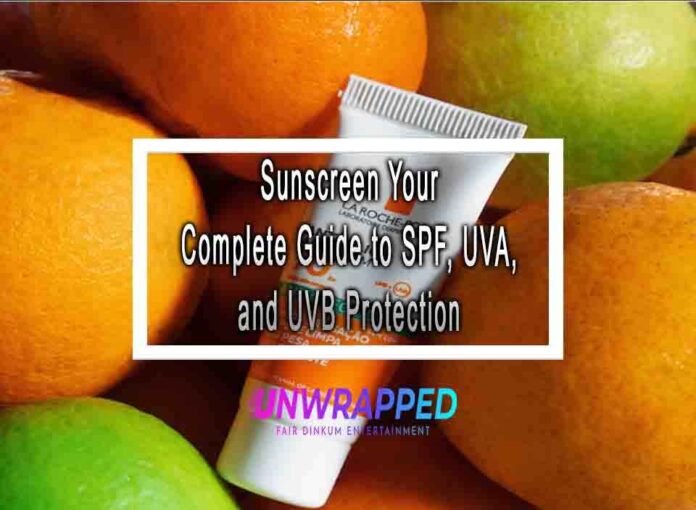Protecting your skin from the sun’s harmful rays is essential for maintaining healthy skin and reducing the risk of skin cancer and premature aging. Understanding sunscreen and its various components is key to effective sun protection. Here’s your complete guide to SPF, UVA, and UVB protection:
SPF (Sun Protection Factor):
SPF is a measure of how well a sunscreen can protect your skin from UVB (ultraviolet B) radiation, which is responsible for causing sunburn. Here’s what you need to know:
- SPF Rating: The SPF rating on a sunscreen indicates its ability to block UVB rays. Higher SPF values provide more protection, but the increase is not linear. An SPF 30 sunscreen blocks around 97% of UVB rays, while SPF 50 blocks about 98%. No sunscreen provides 100% protection.

- Reapplication: It’s essential to reapply sunscreen every two hours, or more often if you’re swimming or sweating. This helps maintain protection.
- Broad-Spectrum: Look for “broad-spectrum” on sunscreen labels, indicating protection against both UVA and UVB rays.
UVA and UVB Rays:
Understanding the difference between UVA and UVB rays is crucial for comprehensive sun protection.
- UVA (Ultraviolet A): UVA rays are responsible for premature aging, as they penetrate deeper into the skin and can cause wrinkles and skin damage. They are present at relatively consistent levels throughout the day and year. UVA rays are a major contributor to skin aging and the development of skin cancers.
- UVB (Ultraviolet B): UVB rays primarily cause sunburn and damage to the skin’s outer layers. These rays are more intense during midday and summer months. UVB rays are a major contributor to skin cancers, including melanoma.
Choosing the Right Sunscreen:
When selecting a sunscreen, consider the following factors:
- Broad-Spectrum: Ensure the sunscreen offers broad-spectrum protection to shield your skin from both UVA and UVB rays.
- SPF Rating: Choose an SPF rating that suits your needs. SPF 30 is typically adequate for most people, but higher SPFs can be beneficial for extended sun exposure.
- Water-Resistant: If you’ll be swimming or sweating, opt for a water-resistant sunscreen and remember to reapply after water activities.
- Skin Type: Consider your skin type and whether you have any specific skin concerns. Some sunscreens are designed for sensitive skin, oily skin, or those with specific skin conditions.
- Ingredients: Pay attention to the ingredients in the sunscreen, especially if you have skin sensitivities or allergies. Mineral sunscreens containing zinc oxide or titanium dioxide are suitable for sensitive skin.
Application and Sun Protection Tips:
- Apply sunscreen generously to all exposed skin areas, including the face, neck, ears, and the back of the hands.
- Don’t forget commonly overlooked areas, such as the tops of your feet and the back of your neck.
- Apply sunscreen at least 15 minutes before sun exposure to allow it to be absorbed by the skin.
- Reapply sunscreen every two hours, or more frequently if swimming or sweating.
- Use other sun protection measures, such as wearing protective clothing, hats, and sunglasses, and seeking shade during peak sun hours.
- Avoid tanning beds, which expose your skin to harmful UV radiation.
By understanding SPF, UVA, and UVB protection, and choosing the right sunscreen, you can effectively safeguard your skin from the sun’s harmful effects and maintain its health and youthful appearance. Sunscreen is a crucial tool in your sun protection arsenal, but it should be combined with other sun-smart practices for comprehensive protection.









